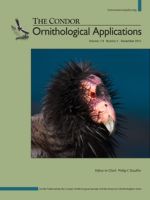Following wildfire, forest managers are challenged with meeting both socioeconomic demands (e.g., salvage logging) and mandates requiring habitat conservation for disturbance-associated wildlife (e.g., woodpeckers). Habitat suitability models for nesting woodpeckers can be informative, but tests of model transferability are needed to understand how broadly models developed at one location can be applied to inform post-fire forest management at other locations. We developed habitat suitability models and tested their transferability for 2 disturbance-associated woodpecker species, Black-backed (Picoides arcticus) and Lewis's (Melanerpes lewis) woodpecker. Habitat suitability models consisted of weighted logistic regression models comparing environmental conditions at nest versus non-nest sites. We developed models at each of 3 wildfire locations in Washington, Oregon, and Idaho, and then examined predictive performance for each model at alternate (“application”) locations. Models generally discriminated nest from non-nest sites well at locations where they were developed but performance was variable at application locations, indicating limited transferability. Models for Black-backed Woodpecker and those that included field-collected environmental covariates exhibited greater transferability than models for Lewis's Woodpecker and those that only included remotely sensed covariates. Transferability was also generally poor between Oregon and the other 2 locations. Limitations to model transferability observed in this study suggest models developed at any one wildfire location are unlikely to be generally applicable across the entire range of Black-backed and Lewis's woodpeckers. Generally applicable models to inform post-fire forest management will therefore likely require integration of data from multiple wildfire locations.
How to translate text using browser tools
19 October 2016
Transferability of habitat suitability models for nesting woodpeckers associated with wildfire
Quresh S. Latif,
Victoria A. Saab,
Jeff P. Hollenbeck,
Jonathan G. Dudley
ACCESS THE FULL ARTICLE

The Condor
Vol. 118 • No. 4
November 2016
Vol. 118 • No. 4
November 2016
Black-backed Woodpecker
breeding habitat
disturbance-associated woodpeckers
forest management
habitat suitability model
Lewis's woodpecker
Melanerpes lewis




